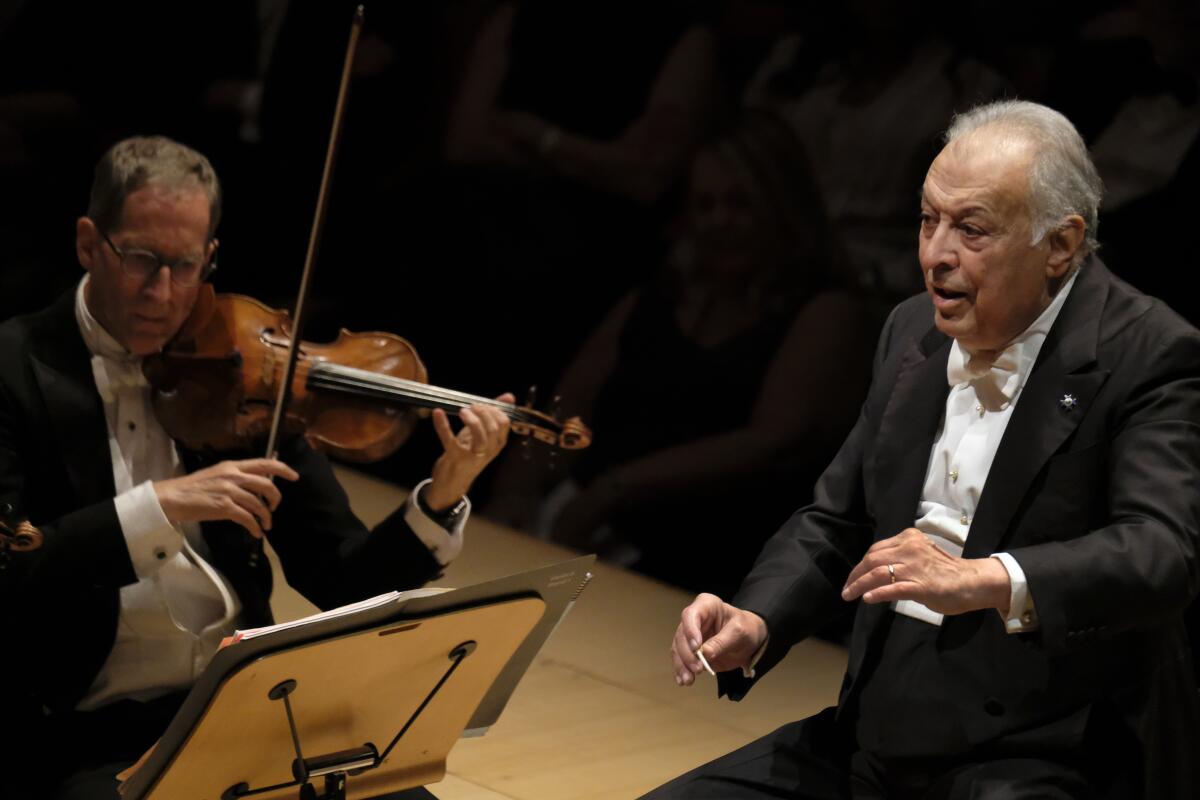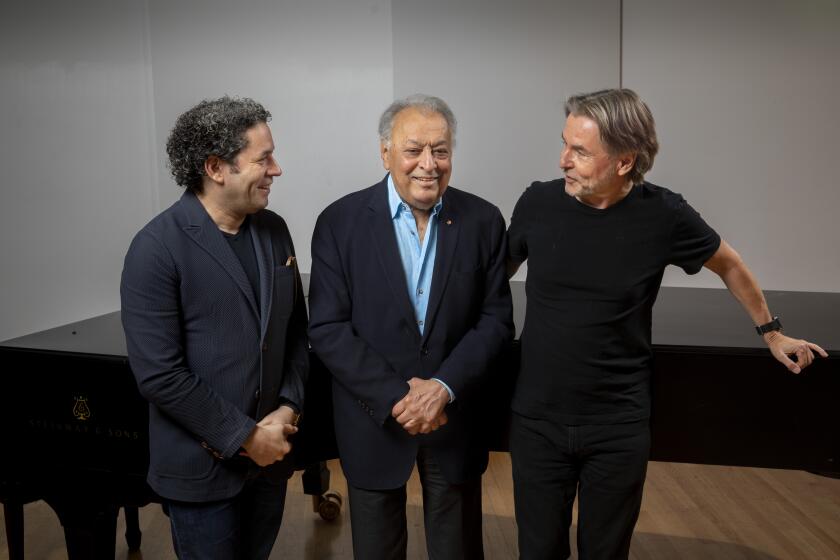Review: New Yearâs, the Zubin Mehta way. How the L.A. Phil gets bubbly in Viennese style

New Yearâs Day symphonic programs are common around the world, but the really big show happens in Vienna. Televised in one form or another to more than 90 countries, with audio and video recordings of the concert faithfully issued every year, Viennaâs New Yearâs concert continues to spin variations around the same core: music from the Strauss dynasty, played by an orchestra that has the style in its bones, the Vienna Philharmonic.
Itâs a tough act with which to compete, but Zubin Mehta and the Los Angeles Philharmonic gave the locals a pretty good impression of what a Viennese New Year concert might be like Wednesday night.
Obviously, there were differences. The futuristic Walt Disney Concert Hall cannot be transformed into Viennaâs gilded Musikvereinssaal, although they tried with a similar flower arrangement on the stage rim. Nevertheless, Disney has its own acoustical advantages, giving razor-sharp definition to familiar details. Also, this was only half of a Viennese New Yearâs concert in the traditional sense; the first half was devoted to Mozart, who lived a good deal of his life in Vienna, true, but a century removed from the time frame of the Vienna concertâs format. And Johann Strauss Jr. was on his own in the second half, minus his father and brothers.
The L.A. Phil had one big card to play: its conductor emeritus, a Viennese-trained veteran of five Vienna New Yearâs concerts dating to 1990. Among living conductors, only Riccardo Muti has done as many. You could be sure that Mehta â now walking unassisted to the podium, without the cane that he used in October â would have the Viennese feeling for staggered rhythm and graceful phrasing well in hand.
Always working from memory, Mehta paced the transitions in the Overture to Straussâ âThe Gypsy Baronâ masterfully, getting the orchestra to execute a perfect acceleration into the pieceâs main body. The micro-fluctuations in tempo gave the delicate Strauss âAnnen-Polkaâ life, and the fast Strauss polkas âTritsch-Tratschâ and âThunder And Lightningâ were not rushed yet had plenty of dash, with the trombones doing standing comic turns in the latter.
Israeli-born soprano Chen Reiss, a Mehta protegĂŠe from his days at the Bavarian State Opera in Munich, ably negotiated the vocal acrobatics in the not-too-often-heard vocal version of Straussâ âVoices of Springâ waltz and unveiled her full voice in the Czardas from Straussâ âDie Fledermausâ as Mehta drew out the opening and produced some zing in the orchestral part later.
In the Mozart half, Mehta delivered a leisurely paced, dark-silky-textured Overture to âThe Marriage of Figaroâ from a chamber-sized aggregation, while violinist Julian Rachlinâs rendition of the Violin Concerto No. 3 was the most persuasive in the songful stretches of the slow movement.
Yes, there were encores, but not the usual tradition-encrusted ritual that closes the Vienna concerts. Rachlin followed Mozart with Fritz Kreislerâs âSchĂśn Rosmarinâ (with Mehta playfully plucking the last chord on Rachlinâs violin himself) and the Sarabande from Bachâs Partita in D minor. After Reiss warbled Leharâs faux-Spanish, ultra-sentimental âMein Lippen, Sie KĂźssen So Heissâ (from âGiudittaâ), glasses of champagne were passed out to the orchestra as they attempted to play Straussâ âChampagne Polka.â With and without the bubbly, the L.A. Phil was having a ball.
A historic interview with Zubin Mehta, Esa-Pekka Salonen and Gustavo Dudamel â three conductors spanning six decades of the L.A. Philâs 100-year history.
More to Read
The biggest entertainment stories
Get our big stories about Hollywood, film, television, music, arts, culture and more right in your inbox as soon as they publish.
You may occasionally receive promotional content from the Los Angeles Times.











